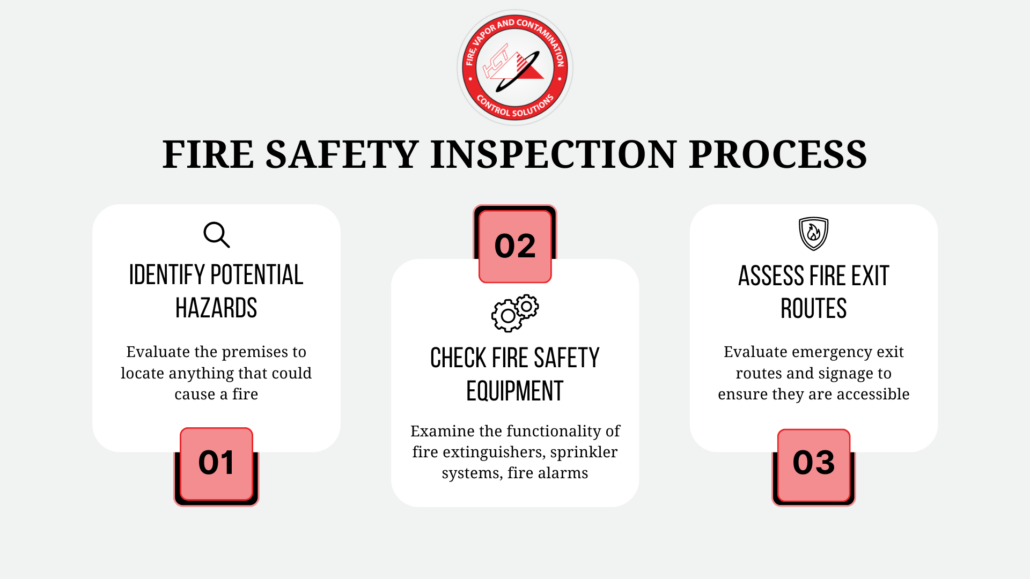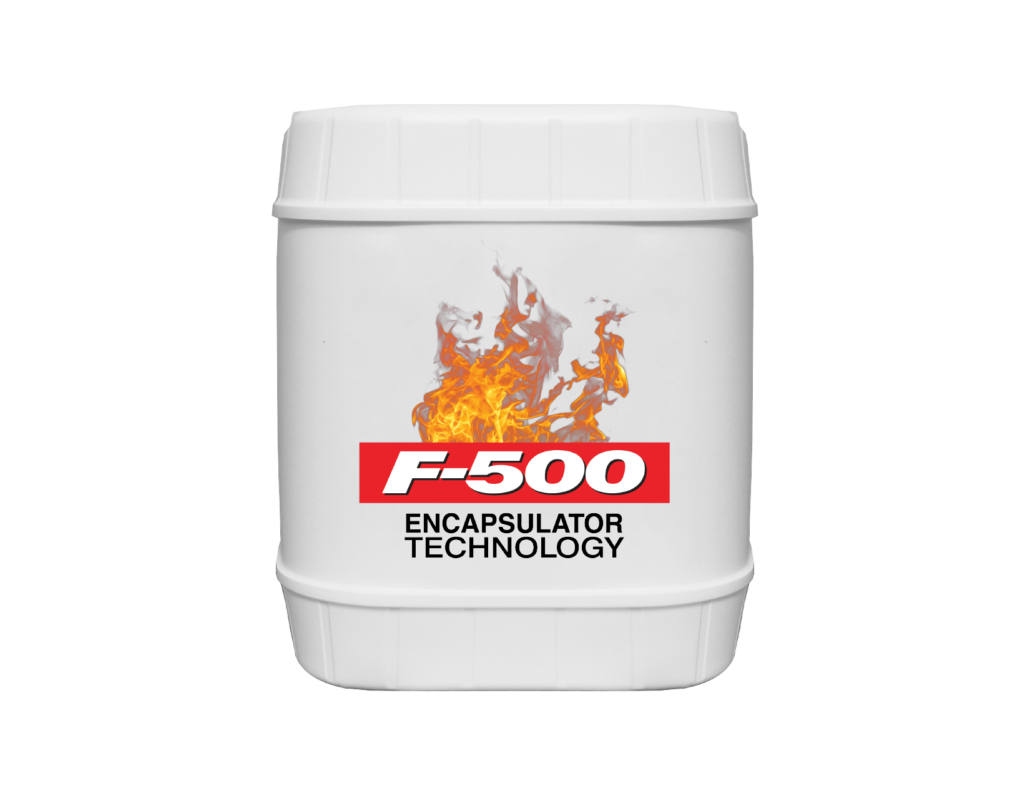Conducting regular fire safety inspections is critical to safeguarding lives and property and ensuring that all fire protection systems are functioning correctly. These inspections help you maintain compliance with NFPA safety standards and identify potential fire risks early on, ultimately protecting your infrastructure and operations.
Deep Dive into Fire Safety Inspections
Fire and life safety inspections involve a comprehensive review process that is crucial for ensuring that environments are secure from potential fire hazards. This process involves several steps:

- Identifying Potential Hazards: Inspectors evaluate the premises to locate anything that might cause a fire, such as the accumulation of flammable and combustible materials or the overheating of electrical equipment.
- Checking Fire Safety Equipment: They examine the functionality and maintenance status of fire extinguishers, fire sprinkler systems, and fire alarm systems to make sure they meet current standards and work properly.
- Assessing Fire Exit Routes and Signs: Inspectors evaluate the emergency exit signs and routes to ensure they are accessible and clearly marked.
During the inspection process, they might also ask to see a variety of fire safety documents, such as an emergency action plan, records of employee fire training, proof of previous inspections, and a fire safety maintenance checklist. This meticulous process ensures that all safety mechanisms are prepared to function in the event of a fire, further enhancing safety and minimizing risks.
Requirements for Safety Inspections in Various Settings
The frequency and requirements of these inspections can vary depending on the type of setting, whether it’s residential buildings, commercial businesses, industrial facilities, etc. They are often mandated at set intervals to ensure ongoing compliance with fire safety standards, which typically happen weekly, bi-weekly, monthly, quarterly, half-quarterly, or yearly.
For business owners, proactively scheduling these inspections is not just about adhering to legal requirements. It’s about protecting your assets, employees, and customers. Obtaining a safety inspection certificate after each assessment is also important to show that your business meets all industry standards. This is crucial for legal compliance and can enhance the reputation of your business.
Roles and Responsibilities of Fire Inspectors
Fire inspectors play an important role in these inspections by thoroughly assessing the fire prevention measures within various facilities. Their main responsibilities include identifying potential fire hazards and ensuring all protocols meet safety standards. Their expertise is crucial when interpreting and enforcing local and national fire codes, which are designed to minimize the risk of fire-related incidents.
Training and Qualifications
Becoming a certified fire inspector requires extensive training and a deep understanding of fire science, building codes, and fire protection systems. They are required to complete educational programs that include courses in fire prevention, enforcement, and the investigation of fire causes. Hands-on training is another component that helps potential inspectors gain practical experience. Continuous development is also necessary to stay aware of the latest advancements in fire safety technology and changes in fire codes.
Fire Safety Inspections in Ensuring Compliance with Fire Codes
Fire codes are important regulations designed to prevent fire incidents and improve safety in buildings and facilities. These safety codes are enforced by various authorities, such as the state fire marshal and local fire departments, who play a role in regulating these fire inspections. These authorities ensure that all residential, commercial, and industrial properties adhere to strict safety standards to minimize fire hazards and protect the occupants of the space.
The NFPA 1 offers the most up-to-date information about fire safety and the best strategies to prevent damage. The International Fire Code (IFC) is also an important resource that regulates the fire safety requirements for existing and new construction, facilities, storage, etc.
Annual Inspection Requirements
To maintain compliance with all applicable codes, there is a mandatory requirement for annual fire safety inspections in most jurisdictions. These annual checks are important because they help identify and correct potential safety issues before they escalate into serious hazards. Yearly inspections ensure that any changes in building usage or structure are evaluated for fire safety compliance, keeping safety measures up-to-date and effective.
Implications of Non-Compliance
Non-compliance with fire codes can have severe implications for property owners and managers. These penalties can range from heavy fines and citations to more severe consequences like the closure of facilities that are violating these safety standards.
Beyond legal ramifications, non-compliance presents significant risks to the safety of occupants and can lead to property damage and other losses in the event of a fire. Therefore, adhering to these regulations and addressing annual inspection requests are critical to the overall safety of individuals and property.
Choosing the Right Fire-Extinguishing Agents
During the fire safety inspection process, one critical aspect is the evaluation of the fire extinguishing agents and systems used within the facility. It’s essential to make sure these agents are suitable for the types of fire risks present and are effective under various conditions. Inspectors assess this equipment in the review process to confirm its effectiveness and maintenance status, as the right choice can greatly influence the outcome in an emergency situation.

F-500 Encapsulator Agent
When searching for the most advanced fire suppression solutions, F-500 Encapsulator Agent is the ideal choice. Unlike traditional foam agents that work on a mechanical level, F-500 EA works on a chemical molecular level. This approach allows it to rapidly cool down the heat element and encapsulate the fuel source, preventing the flames from re-igniting.
The benefits of F-500 Encapsulator Technology include:
- Works on all four elements of the fire tetrahedron simultaneously
- Compatible with many sprinkler heads and deluge systems
- Rapid heat reduction and encapsulation of combustible gases reduces the risk of re-ignition
- Reduces the concentration of hazardous materials and carcinogens present in smoke and soot.
- Fluorine-free, non-corrosive, and biodegradable features improve community health
Given its effectiveness and versatility, F-500 EA is the ideal solution for enhancing fire safety in any setting. With this encapsulating agent, companies can enhance their fire suppression capabilities and ensure a higher level of protection against diverse fire classes.
Improving Fire Safety with Hazard Control Technologies
At Hazard Control Technologies, we are leaders in fire protection. We serve countless industries, including automotive, aviation, industrial, maritime, environmental, petrochemical, and more. Our advanced technologies and solutions are designed to meet rigorous safety standards, helping businesses improve their readiness for fire safety inspections. Our flagship product, the F-500, offers reliable, effective, and environmentally friendly fire suppression capabilities. This commitment to excellence ensures that our clients don’t just meet but exceed the demands of fire safety standards, protecting their physical and human assets.
Contact Hazard Control Technologies today and let us help you enhance your fire suppression strategy with advanced, eco-friendly extinguishing agents. We offer reliable fire safety solutions that you can count on when it matters most.
Resources:
- Hazard Control Technologies. https://hct-world.com/
- National Fire Protection Agency. https://www.nfpa.org/
- OSHA. https://www.osha.gov/fire-safety/standards




